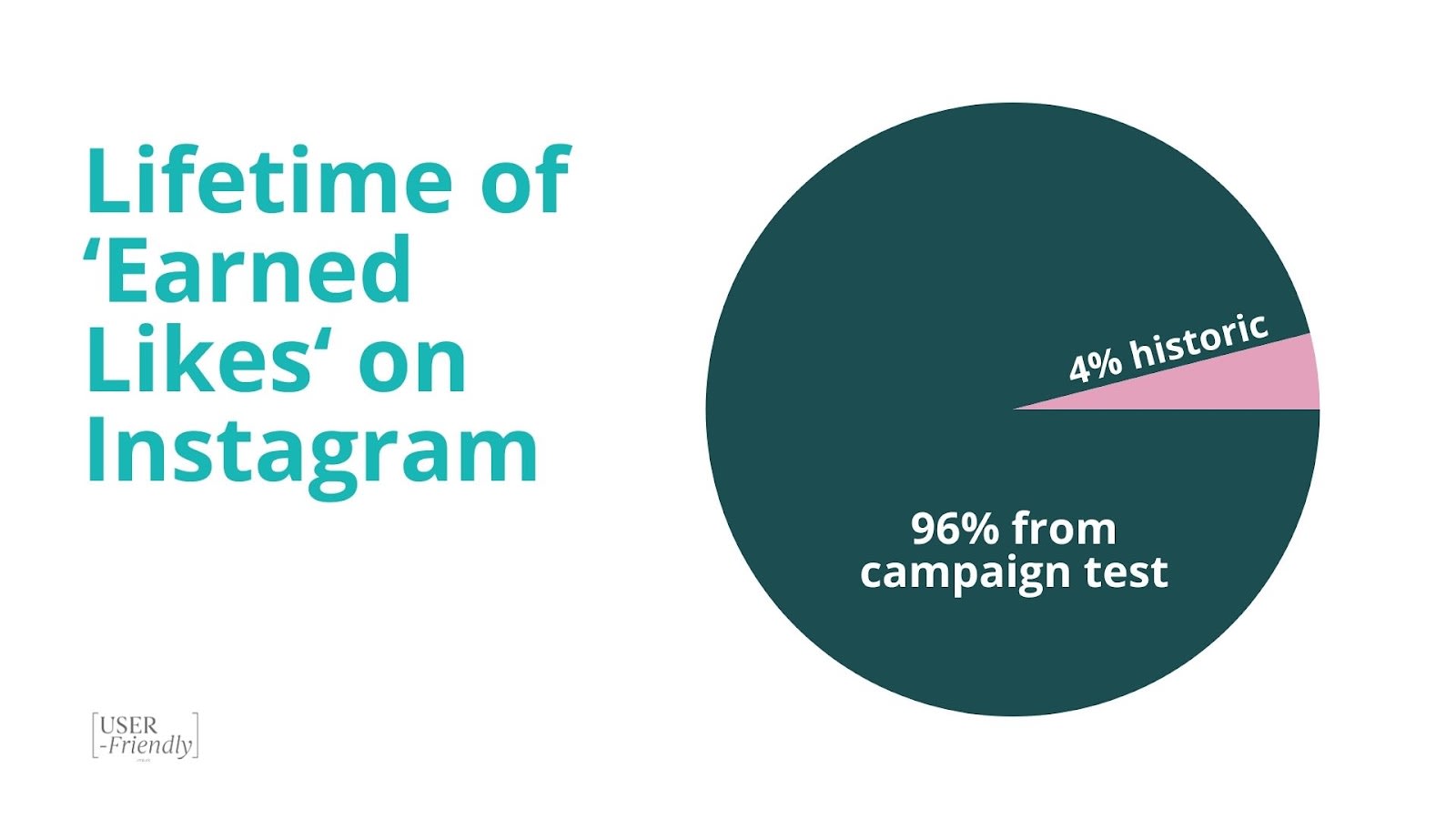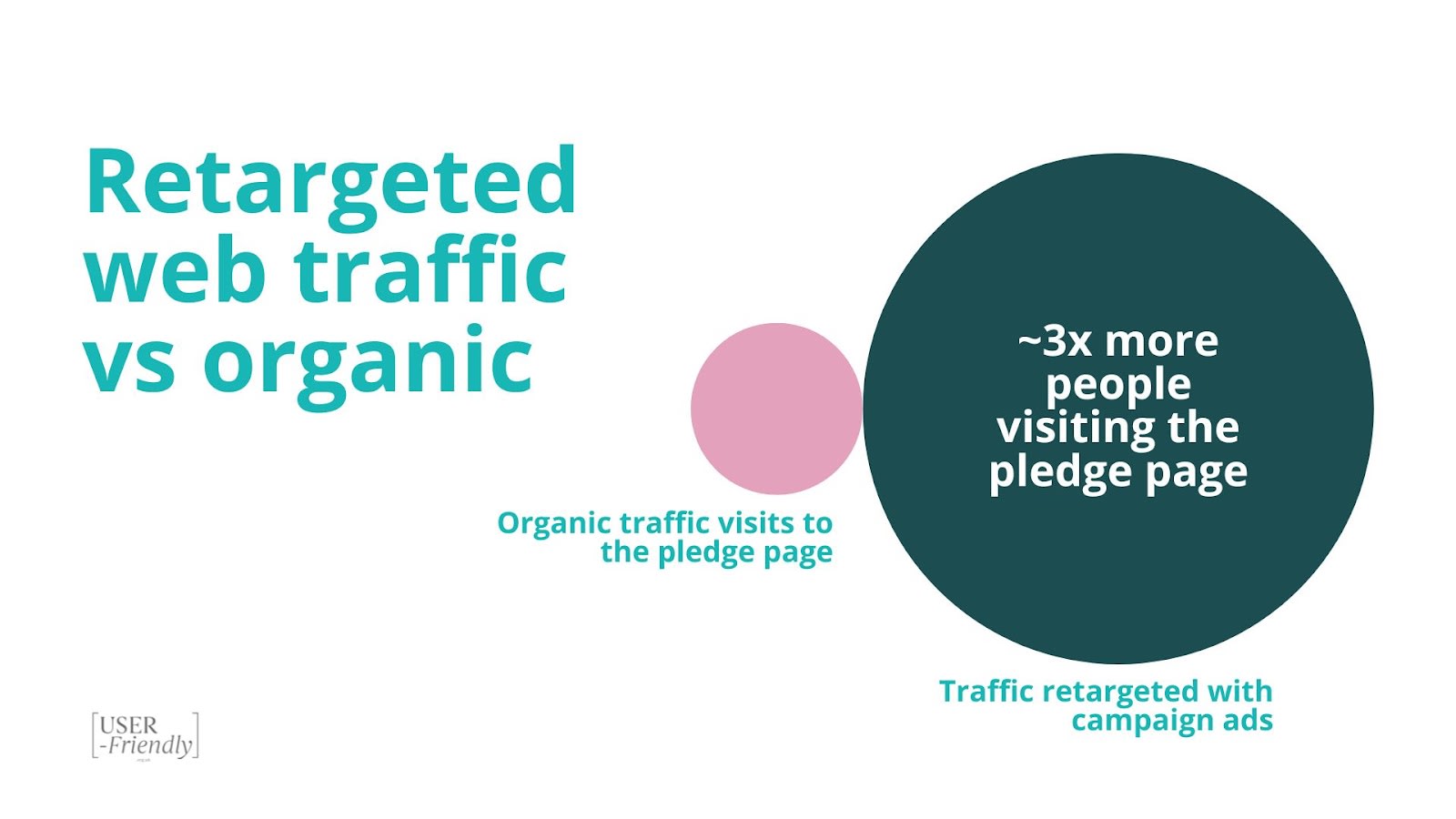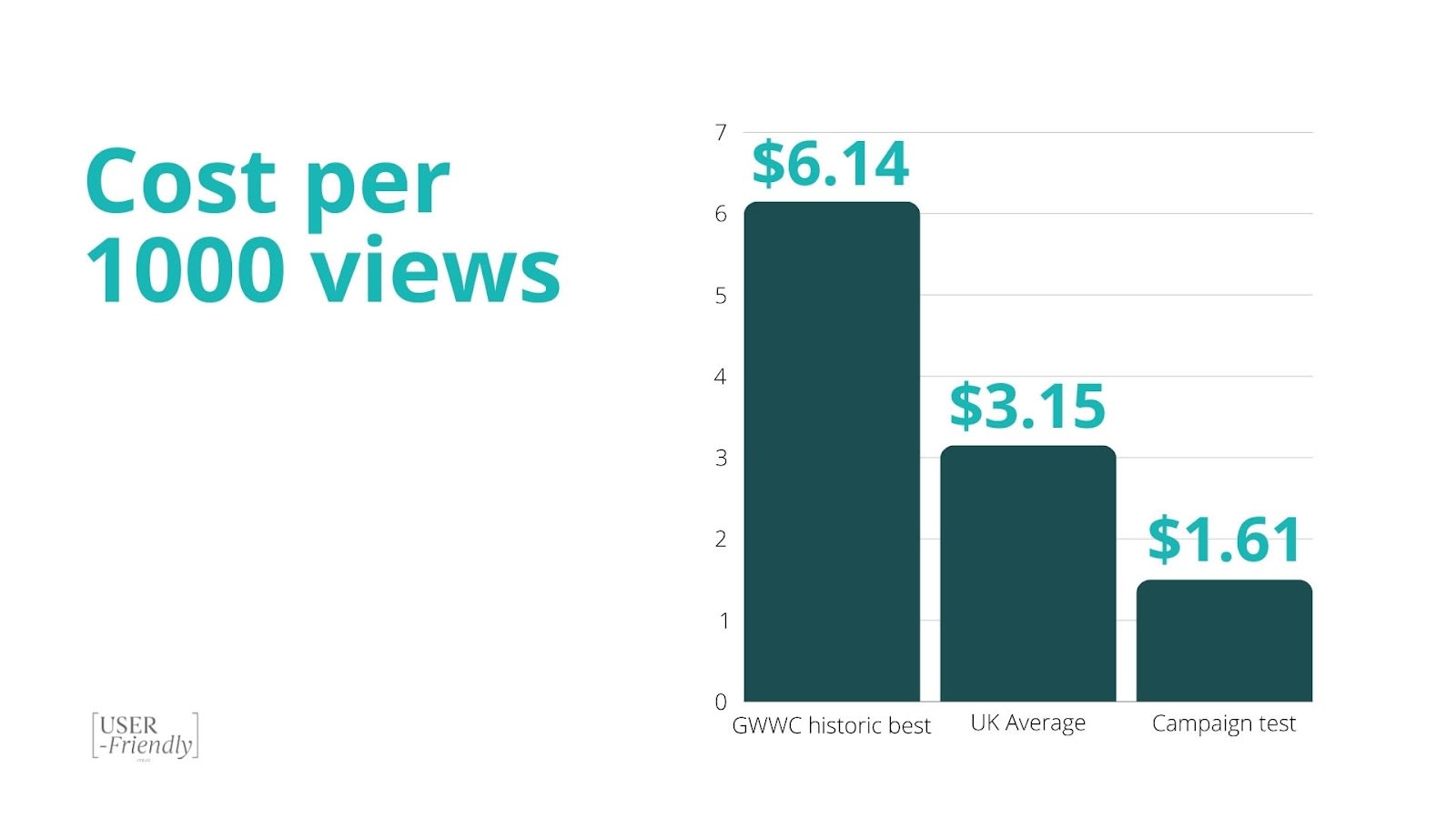Overview
We recently ran a test to see if utilising creative marketing practices could increase the performance of a brand-led digital campaign, and it did. We are sharing the results to encourage other organisations to consider the quality of their output in areas where this could directly impact engagement, potentially resulting in increased donations and or pledge sign ups in the long-term.
We partnered with Giving What We Can and produced a brand awareness video to test the power of creativity - the results prove the worth in investing time in the creative quality of movement marketing overall.
Grace Adams, Head of Marketing at GWWC: “We are really happy with the performance of this campaign, and it’s given us more confidence to undertake more creative approaches with future campaigns. We’re excited to see how the increased awareness will translate into results further down the line.”
Creative marketing practice refers to content production that employs innovative and imaginative approaches to capture the attention of the target audience and evoke emotional responses, effectively conveying the core message. The aim here was to test a more creative approach comparatively to the existing content across their social media.
The quality of the creative concept in an ad is one of the biggest drivers to impact (see Kantar research here), and the results from this campaign indicate that we could see great returns by swapping out low fidelity, simply informative, ration-led content for more distinctive and emotive content.
The Campaign
You can see a version of the ad here.
| Objective | Increase Giving What We Can brand awareness over Giving Season |
| Target | Educated, top 50% earners, median ~30, working professionals with interest in relevant philanthropic topics e.g. climate breakdown |
| Ad Spend | $4,899.58 on YouTube & $7,172.41 on Instagram |
| Duration | ~8 weeks |
| Channels | Videos for Instagram and YouTube. We also created related display ads to direct web traffic back to the GWWC pledge |
| Overall Metrics | Reach: 4,554,692 Total Impressions: 7,923,623 CPM: $1.61 Views: 5,357,063 Engagements: 931,100 CPE: US$0.01 Web Traffic: 24,914 new users Pledge Page Visits: 465 From retargeting: 1111 users visited the website for 4 mins or more & 469 users visited for 10 mins or more |
The Headliners
You can see a version of the ad here.
1) 48x more views on Reels, Stories and Feed, than any previous campaign on Instagram.
2) Attributed Instagram profile visits were 249% higher than any other previous campaign.
3) Referrals from Instagram to the GWWC website are typically extremely low (<100 per month) however we produced:
- 1622 users referred from Instagram visited 4 mins or more
- 429 users referred from Instagram visited 10 mins or more
4) 96% of the earned likes[1] from the GWWC account lifetime originated from this campaign. This not only signifies the quality of the audience we targeted—individuals new to the content—but also highlights their engagement with the broader content ecosystem of the brand.
5) Retargeting web traffic with campaign-branded ads produced almost 3x more people visiting the pledge page compared to organic traffic visits to the pledge page, despite organic traffic representing twice as many new users overall.
6) Reached over 4.5m people in the UK with an average CPM (cost per 1000 impressions) of $1.61. This is 2.5 times lower than the average CPM for UK video campaigns, especially for YouTube and Instagram. And substantially lower than Giving What We Can’s previous CPM average of $6.14.
To consider;
- Organisations are not fully utilising creative marketing practices meaning that for every dollar you spend on your marketing and communications (having not considered a more creative approach), you are leaving impact on the table.
- Organisations under-prioritise long-term marketing even though it could have huge implications for awareness, funding and overall impact in the long-term but also significant results in the very short-term. In just 8 weeks, we’ve produced a substantial brand lift for GWWC and spread their campaign more widely than any previous campaign or drip feeding content.
- Organisations dedicate little to no time or resources to top-of-funnel, brand awareness building activity. This means that we are always asking something of our audience (short-term marketing) rather than working on them getting to know us first, increasing the likelihood of a bigger yes later down the line. (See, Freeman and Fraser 1966)
Interested in a test?
We are looking to partner with public-facing organisations to develop creative concepts that support your organisation's goals e.g. increase web traffic.
We will develop the concept and create the collateral, dispersing the assets, tailored for each individual collaboration.
We will focus on either; brand awareness, pledges (if you have them) and or direct donations depending on your goals.
The goals for the collaboration would be;
- A clear and measurable increase in exposure
- Statistics as performance indicators e.g. social media impressions, click throughs from ads, etc.
- Increased exposure with minimal resource cost to your organisation
- Increased sense of what can be achieved with quality creative marketing campaigns
Let's Talk
Letstalk@userfriendly.org.uk | www.userfriendly.org.uk
- ^
(an earned like occurs when viewers, having watched our video ad, subsequently like a video from our linked YouTube channel within 7 days of the initial view).




Really cool experiment!
Was it possible to track to what extent the more engaging ads drove conversions? (donations made, pledges taken, etc.)
My hypothesis would be the more engaging ads get more people onto the website, but those people will be much less likely to follow through (and especially with significant amounts), than for example a very targeted and nerdy ad aimed at wealthy tech workers.
Hey, thanks for reading.
The objective for the campaign was increase the brand awareness (taking people from 'never heard of GWWC' to 'remember that they exist') and not conversion (taking people from 'remember that they exist' to 'doing something'). We would never expect people who had never heard of GWWC to hear about them for the first time and then pledge. It's going to take time to warm them up. It's also not part of our campaign test, or within our control the ability of the site to convert traffic.
That said, it's important to remember long-term branding work can produce conversion results, and in this case, we delivered 3x more pledge page views (for 4 mins and more) than organic traffic, and ~80% of all traffic hitting the pledge page. So we were targeting engaged and interested people (as compared to organic traffic).
It's too early to know the pledge levels of this new audience as it'll take time and continued engagement to bring them along (we'd expect ~7 interactions before they act), but it's a good story that we're bringing a much larger audience to the table.
What's the basis of your hypothesis?
Congrats! Can we see the videos/collateral you created somewhere?
Yes, absolutely. You can see a version here: https://www.youtube.com/shorts/K4YBAzACTRU?feature=share
It is linked in the doc above the table. I've just made bold to make more clear.
Thanks! My apologies for missing that.
It's great to have the positive example, and it'd be great too to have some concrete negative example of the ads that were unsuccessful.
Or maybe it's not really that they weren't unsuccessful but rather just "ambient-level"?
Hey, thanks for reading.
Yeah, we wouldn't say that they were unsuccessful, just less-so.
In a broad sense, we'd expect ads that were poorly branded, rational arguments only and lacking in intrigue and interest as 'unsuccessful'